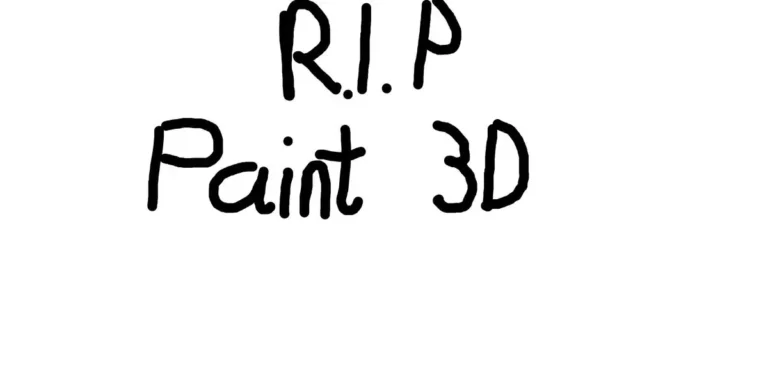Windows Paint stands as a nostalgic pillar in the history of personal computing. For many users who grew up engaging with Windows PCs, Paint was often their first venture into digital creativity. Even as a child, I vividly recall spending countless hours experimenting with its features, primarily because my computer at that time couldn’t handle more demanding software or video games. Paint’s user-friendly interface and simplicity made it a favorite playground for budding artists, allowing creativity to flourish without overwhelming complexity.
However, the landscape of digital art and design tools has shifted significantly over the years. In recent times, Microsoft introduced Paint 3D, which aimed to modernize and elevate the traditional Paint experience by providing 3D design capabilities. Sadly, Paint 3D has recently been discontinued and removed from the Microsoft Store, leading to inevitable speculation about the future of 2D and 3D rendering in Microsoft’s software ecosystem.
Reports indicate that Paint 3D has entirely vanished from the Microsoft Store. For users who had downloaded it prior to November 4, the application remains accessible, albeit without future updates. This stagnation begs the question — has Microsoft judged Paint 3D to be unworthy of continued support? For many, the answer likely lies in the software’s shortcomings compared to its competitors.
Although Paint 3D boasted features designed for creating 3D images, its capabilities paled in comparison to established software like Blender. As a result, artists seeking serious 3D modeling typically gravitated toward more robust tools, overlooking Paint 3D entirely. Furthermore, user experience reports indicated sluggish startup times and inefficiencies that made it less than ideal for simple editing tasks — the very type of work most users intended to do in the first place.
Contrastingly, the original Paint software continues to receive substantial updates. Microsoft has continually refined Paint, adding modern features such as artificial intelligence tools for background removal and a plethora of new brushes and editing options. These enhancements have transformed Paint into a more versatile program appealing to casual users and hobbyists alike. The integration of AI-driven image generation further elevates the program, providing functionalities previously unheard of for basic image editing software, thus allowing it to compete more directly with established platforms like GIMP and Photoshop.
One of Paint’s key advantages lies in its compatibility with various drawing tools, catering especially to Windows tablet users. In this scene, Paint emerges as the go-to program for users seeking a painting tool akin to Procreate on the iPad. The transformative updates have breathed new life into the classic software, making it suitable for a wide array of creative endeavors.
While it’s tinged with nostalgia to mark the end of Paint 3D, one must acknowledge that its discontinuation may be justified. For a software intended to innovate and uplift creativity, it failed to capture the imagination of the user base that relied upon it. Instead, it faltered against better alternatives and had issues that diminished its functionality.
This series of developments underscores a broader trend in digital creation software — the evolution and tendency to prioritize quality over quantity. The end of Paint 3D opens the door for Microsoft to focus its resources on enhancing Paint and refining the user experience for a loyal community of creators. While we bid farewell to Paint 3D, the vibrant world of digital creativity continues to thrive within the confines of Paint, reaffirming its place as a beloved companion for both the novices of yesterday and the creators of tomorrow.
Paint 3D may not be missed, but its brief existence provokes reflection on how digital tools evolve. Microsoft’s decision to hone in on Paint’s strengths could herald an exciting future for those who embrace the art of creation, ensuring that even as technologies shift, the spirit of artistic innovation endures.


Leave a Reply